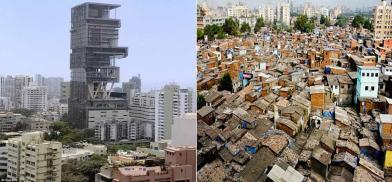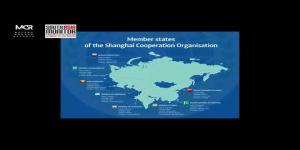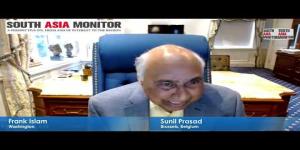India's GDP Numbers: The Myth of Prosperity and the Reality of Inequality
According to the World Inequality Lab, the top 1% own over 40% of India's total wealth. The starkness of this trend is apparent: a "rising India" for a few, but ongoing deprivation for the majority.

India's rapid GDP growth and its prominent status as the world's fourth-largest economy often dominate discussions about its success story. However, these impressive figures conceal a more troubling reality faced by most Indians. The country's official per capita income, estimated at around $2,800 for 2024, indicates a nation on the rise. Yet, a closer look at wealth distribution reveals a profound level of inequality, with prosperity mainly concentrated at the top and millions living in poverty.
The Illusion of Per Capita Income
The concept of per capita income is straightforward: dividing the total revenue of a country by its population. With a GDP around $4 trillion and a population of 1.4 billion, India's per capita income is $2,800. This figure is often used to show improvements in living standards and economic strength.
However, per capita income is just an average, and averages can be very misleading in a society with huge disparities. When a small portion of the population controls a large amount of wealth, the "average" does not represent the typical experience of most people.
The Real Picture: Extreme Wealth Concentration
India's stark inequality is shown by examining its wealthiest citizens. Mukesh Ambani and Gautam Adani, two of India's leading industrialists, together hold around $200 billion. The top 10 richest Indians control $420 billion, while the top 200 collectively own over $1 trillion.
The gap becomes even more apparent: the wealthiest 1% of Indians control about $1.6 trillion, and the top 5% hold as much as $2.5 trillion. Given India's $4 trillion GDP, this indicates that a tiny portion of the population owns a disproportionate share of the nation's wealth—leaving the rest with significantly less than the average would imply.
Excluding the Elite: How Per Capita Wealth Plummets
To truly understand inequality, consider what happens when we remove the ultra-rich from the wealth calculations: -
·Excluding Ambani and Adani: Per capita wealth decreases from $2,800 to $2,700—a modest decline.
·Excluding the Top 10: It drops further to $2,500.
·Excluding the Top 200: The figure falls to $2,150.
·Excluding the Top 1%: Per capita wealth drops sharply to $1,730.
·Excluding the Top 5%: It decreases to just $1,130.
At this lowest level, India's per capita wealth is now lower than that of most Sub-Saharan African countries, a humbling reality for a nation aspiring to global economic leadership.
Why This Matters: The Social and Economic Impact
Extreme inequality is more than a statistical anomaly. It has significant effects on society, including: -
·Limited Social Mobility. Most people face restricted access to quality education, healthcare, and opportunities.
·Growing Urban-Rural Gap. Cities flourish while rural communities remain trapped in poverty.
·Social Tension. Frustration over unfairness can lead to unrest and damage trust in institutions.
·Economic Inefficiency. When most people have little to spend, demand for goods and services decreases, hampering overall economic growth.
·Wasted Human Potential. Talent in underprivileged communities remains untapped, limiting innovation and national progress.
India in the Global Context
When excluding its wealthiest citizens, India's average income is comparable to or even lower than that of some of the world's poorest countries. According to the World Inequality Lab, the top 1% own over 40% of India's total wealth. The starkness of this trend is apparent: a "rising India" for a few, but ongoing deprivation for the majority.
What Can India Do to Address Inequality?
Bold, systematic interventions are necessary to alter the status quo. Here are several strategies India could adopt: -
·Progressive Taxation and Wealth Redistribution. Implement higher taxes on extreme wealth, inheritance, and capital gains. Global experience shows that fair and effective taxation can fund critical public investments. Use this revenue to improve health, education, and social safety nets, ensuring direct benefits to the most disadvantaged.
·Education and Health for All. Investing significantly in public education and healthcare is essential. Ensuring equal access to quality schools, colleges, and vocational training, along with dependable medical services, empowers future generations and contributes to a healthier, more productive workforce.
·Employment Generation and Labour Reforms. Promote labour-intensive industries, rural infrastructure projects, and entrepreneurship. Designing policies that support small businesses, agriculture, and manufacturing can generate millions of jobs. Social security for informal workers will safeguard the large population currently outside formal safety nets.
·Strengthening Social Protection. Expand and better target direct benefit transfers, rural employment guarantees (like MNREGA), old-age pensions, and food security programs. Digital technology and transparent databases can reduce leakages and ensure aid reaches the intended recipients.
·Land and Agricultural Reforms. Address inequalities in land ownership and boost support for small farmers, who remain the backbone of rural India but continue to face marginalisation. Provide access to credit, insurance, and modern technology, empowering the rural poor.
·Empowering Women and Marginalised Groups. Dismantle barriers for women, Dalits, Adivasis, and other marginalised communities through affirmative action, anti-discrimination laws, and targeted financial inclusion programs.
·Curbing Crony Capitalism. Close ties often increase wealth among the few to power. India must ensure transparent business policies, robust anti-corruption efforts, and fair competition to prevent the undue enrichment of the elite.
·Data Transparency and Policy Research. Commit to regularly publishing reliable data on income, wealth, and inequality. An informed policy debate is only possible if the true extent of inequality is acknowledged and monitored.
The Road Ahead: Building a Prosperous and Fair India
India's economic rise is a beacon of hope, but so is the deep inequality embedded in its social fabric. GDP growth alone cannot define a nation's success if its benefits are not widely shared. Only bold reforms can guide India toward a society where prosperity is more evenly distributed and every citizen, not just the elite, has the opportunity to thrive.
By addressing inequality directly through tax reform, public investment, social protection, and empowering the disadvantaged, India can transform its headline growth into sustainable, inclusive progress. The accurate measure of a country's greatness is not how well its wealthy live, but how it elevates its poorest and most vulnerable. The future of India depends not just on how fast it grows, but on how fairly it lifts all its people.
(The writer, an Indian Army veteran and a former officer in the Armoured Corps, is a strategic analyst. Views expressed are personal. He can be reached at manojchannan@gmail.com; linkedIn www.linkedin.com/in/manoj-channan-3412635; X @manojchannan )









Post a Comment